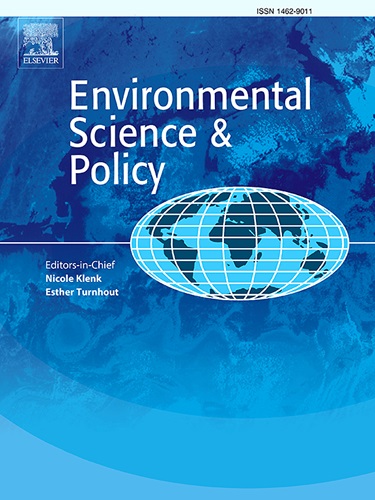Factors contributing to climate adaptation lag in practice: Insights from local and territorial government interactions
IF 4.9
2区 环境科学与生态学
Q1 ENVIRONMENTAL SCIENCES
引用次数: 0
Abstract
Local governments across the globe are facing worsening climate impacts. In response, many decision-makers have initiated processes of planning for climate change adaptation. However, implementation frequently lags in practice. Scholarship exploring adaptation lag often focuses on the role of governance, specifically as it relates to interactions between various common levels of government (e. g., provincial, state, federal). However, there is a dearth of academic literature that targets the relationship between local and territorial governments, particularly in a northern context. To contribute to the narrowing of this gap, we explore the relationship between local and territorial governments in Canada in an effort to shed light on the ways in which government interactions influence progress on adaptation. Specifically, this qualitative study focuses on three local governments (Dawson City, Haines Junction and Whitehorse) in Yukon, a territory in northwest Canada, to explore how enablers and barriers emerge and influence climate adaptation action. Results demostrate that local government decision-makers (e. g., elected officials and senior managers) are eager to adapt. However, challenges impede implementation of adaptation policies in practice. Application of an evolutionary governance lens reveals that path dependencies associated with an awareness of the need to respond to climate impacts facilitate buy-in for adaptation. In contrast, goal dependencies that prioritize mitigation over adaptation stymie momentum on adaptation. Moreover, interdependencies and complex power dynamics related to the local-territorial relationship create unclear roles, further constraining the implementation of adaptation policies in practice. Recommendations geared towards overcoming these challenges are provided.
促进气候适应的因素在实践中滞后:来自地方和地区政府互动的见解
全球各地的地方政府都面临着日益恶化的气候影响。为此,许多决策者启动了适应气候变化的规划进程。然而,实施往往滞后于实践。探索适应滞后的学术研究通常侧重于治理的作用,特别是当它涉及到不同级别政府(如省、州、联邦)之间的相互作用时。然而,针对地方政府和地方政府之间关系的学术文献很少,特别是在北方的背景下。为了缩小这一差距,我们探讨了加拿大地方和地区政府之间的关系,以阐明政府互动影响适应进展的方式。具体而言,本定性研究重点关注加拿大西北部育空地区的三个地方政府(道森市,海恩斯枢纽和怀特霍斯),以探索促成因素和障碍如何出现并影响气候适应行动。结果表明,地方政府决策者(如民选官员和高级管理人员)渴望适应。然而,挑战阻碍了适应政策在实践中的实施。进化治理视角的应用表明,与应对气候影响的必要性意识相关的路径依赖关系促进了对适应的认同。相比之下,优先考虑减缓而不是适应的目标依赖关系阻碍了适应的势头。此外,与地方-领土关系相关的相互依赖和复杂的权力动态造成了不明确的角色,进一步制约了适应政策在实践中的实施。提出了旨在克服这些挑战的建议。
本文章由计算机程序翻译,如有差异,请以英文原文为准。
求助全文
约1分钟内获得全文
求助全文
来源期刊

Environmental Science & Policy
环境科学-环境科学
CiteScore
10.90
自引率
8.30%
发文量
332
审稿时长
68 days
期刊介绍:
Environmental Science & Policy promotes communication among government, business and industry, academia, and non-governmental organisations who are instrumental in the solution of environmental problems. It also seeks to advance interdisciplinary research of policy relevance on environmental issues such as climate change, biodiversity, environmental pollution and wastes, renewable and non-renewable natural resources, sustainability, and the interactions among these issues. The journal emphasises the linkages between these environmental issues and social and economic issues such as production, transport, consumption, growth, demographic changes, well-being, and health. However, the subject coverage will not be restricted to these issues and the introduction of new dimensions will be encouraged.
 求助内容:
求助内容: 应助结果提醒方式:
应助结果提醒方式:


